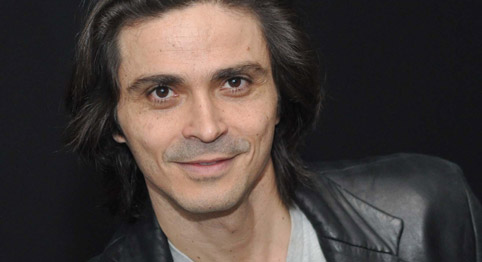
CARLOS FITTANTE, Early Music Festival choreographer |
What with the operas and the big-name visitors and the demonstrations and mini-classes and workshops and symposia and society meetings, to say nothing of the Early Music America Conference and Young Performers Festival, it would be easy to overlook the Boston Early Music Festival's Exhibition, which the New York Times has called "the country's . . . biggest trade fair for instrument builders and performers." Sprawling over the downtown Radisson Hotel's mezzanine Carver Ballroom and sixth-floor conference center, it has instrument makers (just the thing if you don't know your clavicytherium from your theorbenflügel), book and sheet-music shops, information on societies you can join and upcoming festivals you can attend, and a few oddities, like Basilea Books (where you would find a treatise on Charles Williams's novels if I hadn't bought it). Even if you're not up to trying out an instrument, you can learn a lot just from watching other people do so. Here are some highlights from the booths I visited yesterday.
THE EARLY MUSIC SHOP — UK | You might find more actual instruments at this outfit's home base in West Yorkshire, but you could hardly imagine a greater variety: lutes, theorbos, harps, citterns, medieval fiddles, hurdy-gurdies, rebecs (or rubibles — see blow under "Alice Margerum"), viols, portative organs, harpsichords, crumhorns, serpents, bagpipes, and drums of every description. You can spend an hour here with no trouble.
H.F. GRABENSTEIN, BOWMAKER | How many horsehairs go into a string-instrument bow? What difference does the wood make? You can find out that and more from Harry Grabenstein, whose shop is in Williston, Vermont. The wood might be ebony, or snakewood, or African blackwood, each with its own feel and resonance. But it's the bowstrings that fascinate: they generally come from Mongolia, from horses' tails, and the tails have to be white, since if the hair is bleached, it'll weaken. Then there are the frogs, which connect the near end of the horsehair to the bow: they can be boxwood, but also mastodon ivory. Talk about a non-renewable resource — and yet it keeps surfacing in Siberia.
BLUE HERON | Prophets without honor in their own city? Well, not quite, but this outstanding Boston a cappella group headed by Scott Metcalfe have garnered more national than local reviews, and they're not shy about pushing Alex Ross's laudatory assessment of their latest disc, Music from the Peterhouse Partbooks, Volume 1, in the January 18, 2011, New Yorker — in fact, they'll be glad to give you a copy of the article, which is a primer on Renaissance vocal performance practice. Buy the Peterhouse or their earlier Guillaume Dufay disc here, and get their 2011–2012 season to put on your calendar.
LA DONNA MUSICALE | Next door to Blue Heron is another distinguished local outfit, this one dedicated to the performance work of women composers from the Renaissance, Baroque, and Classical periods and also contemporary women composers. Are the likes of Anna Bon, Antonia Bembo, and Elisabeth de la Guerre worth a listen? Try one of the group's discs and you'll be convinced.